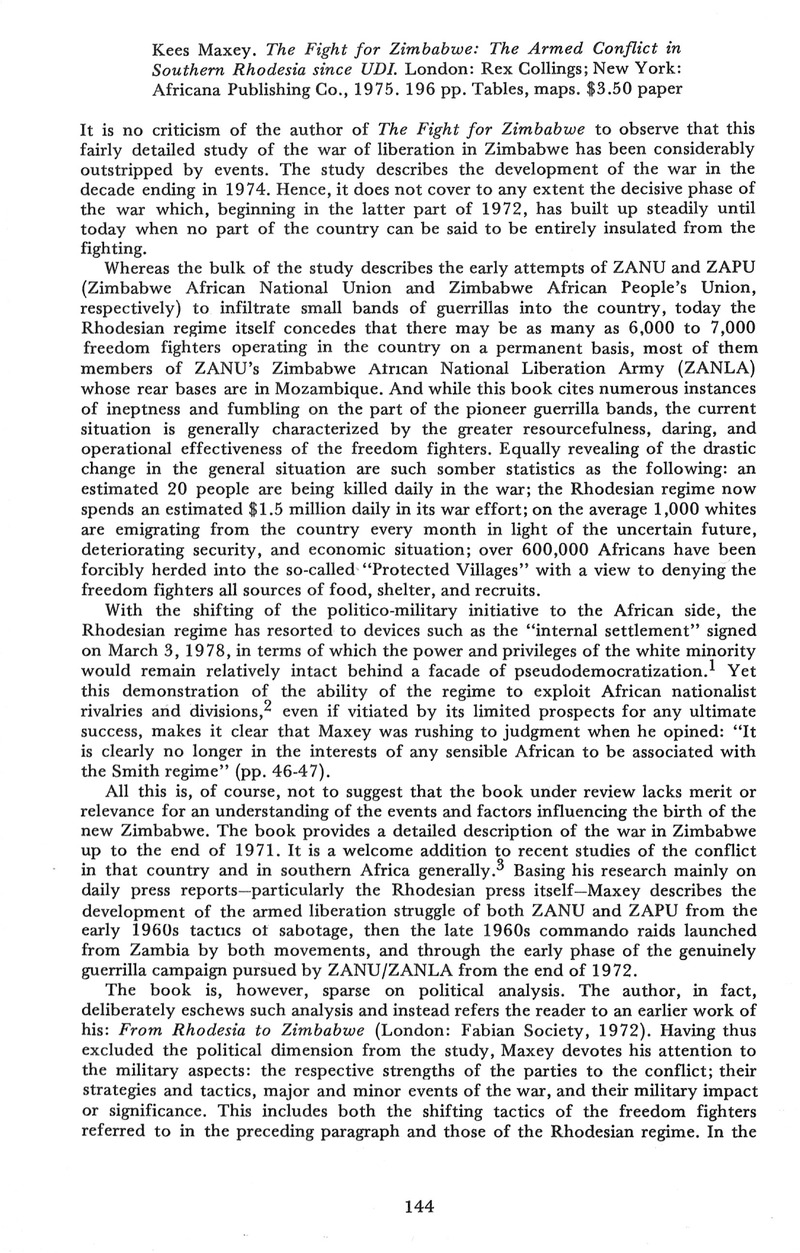No CrossRef data available.
Published online by Cambridge University Press: 07 August 2017

1 For a detailed critique of the internal settlement involving the Rhodesian regime and Bishop A. T. Muzorewa's United African National Council, the Rev. N. Sithole's African National Council (Sithole), and Chief J. Chirau's Zimbabwe United People's Organization, see Catholic Institute of International Relations, Rhodesia's Internal Settlement (London: CIIR, 1978V
2 About which see Utete, C. Munhamu Botsio, The Road to Zimbabwe: The Political Economy of Settler Colonialism, National Liberation, and Foreign Intervention (Washington, D.C.: The University Press of America, 1978), Ch. 7.Google Scholar
3 The author himself shows his awareness of the the significance of the regional context within which the Zimbabwe struggle is taking place by devoting a considerable amount of space to a discussion of South Africa's role in Rhodesia.
4 In a debate in the Rhodesian parliament reported in The Oberver (London) on February 26, 1978, an African member of parliament read excerpts from a leaflet distributed by the government in the Maranke Tribal Trust Land near the Mozambique border. The leaflet announced the imposition of a curfew lasting from dusk to midday. All vehicles, including bicycles and buses, were barred from entering or operating in the area. Any person found on high ground by the security forces would be shot. The regulations were to apply to any African 16 years of age and over. The news report also spoke of the widespread use of torture by the Rhodesian military. See also Catholic Commission for Justice and Peace in Rhodesia, Rhodesia: The Propaganda War (London: CIIR, 1977).
5 Cabral, Amilcar, The Revolution in Guinea (New York: Monthly Review Press, 1969)Google Scholar, especially Ch. 8 entitled “The Weapon of Theory.”